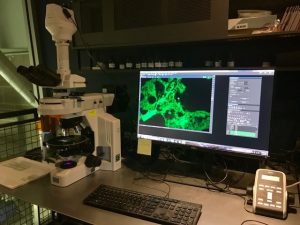DRP Keeps Growing
 Greetings all—it’s been a long time since our last post. In fact, my last post dates back all the way to February 2017, when DRP joined the Twining Group of companies. A lot has happened since then—we’ve had our noses to the grindstone and out of the blogosphere… However, after a little more than two years into the deal, I can safely say that our excitement about joining the Twining Group remains unabated. We have resources that are fostering the growth of DRP in a multitude of ways, from the acquisition and deployment of new and exciting technologies for concrete petrography to the engagement of dynamic and energetic personnel. Examples of these developments include the following:
Greetings all—it’s been a long time since our last post. In fact, my last post dates back all the way to February 2017, when DRP joined the Twining Group of companies. A lot has happened since then—we’ve had our noses to the grindstone and out of the blogosphere… However, after a little more than two years into the deal, I can safely say that our excitement about joining the Twining Group remains unabated. We have resources that are fostering the growth of DRP in a multitude of ways, from the acquisition and deployment of new and exciting technologies for concrete petrography to the engagement of dynamic and energetic personnel. Examples of these developments include the following:
Fluorescence microscopy
In March 2018, DRP concrete petrographers and lab technicians traveled to Copenhagen, Denmark to train in the production of fluorescent thin sections using a Pelcon Automatic Thin Section machine. This is an exciting technology that concrete petrographers have used in Europe for a few decades now. Although initially developed to provide an objective and quantitative method to measure the w/cm of cementitious materials, we are particularly excited about fluorescence because new developments in image analysis make it possible for us to extract more quantitative information from concrete petrography than ever before.
Stay tuned to this blog for details in future posts…
Enhanced contrast method for air void analysis
The improved contrast method involves using image analysis methods to measure the parameters of air void systems in hardened concrete. The method has been around for years but was adopted as an official method in ASTM C457 in 2016. We are major proponents of the technique and were at the forefront of working at the sub-committee level in ASTM to see its adoption. The method provides an ability to extract more quantitative information about air void systems than conventional analysis and reduces the potential for error due to human fatigue. If you’ve ever done an air void analysis, you know what I mean. If you haven’t, feel free to visit and we’ll show you…More details will follow in subsequent posts as we highlight how we are combining the ASTM C457 with other image analysis techniques to gain insights in finishing and other aspects of concrete construction and materials.
New Faces: Chunyu (Joe) Qiao, PhD
Dr. Qiao joined DRP in July 2018 as a senior concrete petrographer and has made a significant impact since Day One. Joe worked with Jason Weiss for his doctorate at Purdue University and traveled with Professor Weiss to Oregon State University to continue working in his group as a post-doctoral researcher. Joe’s Ph.D. research involved, among other things, serving on the front lines of constructing phase diagrams in the Ca(OH)2-CaCl2-H2O system that are linchpins for providing new and vital insights for the deterioration of joints from deicing salts. We’ll discuss that mechanism in more detail soon when an ACI Tech Note from Committee 201 finally comes out (we have one last hurdle). Joe has his fingers in a lot of pies at DRP, ranging from fluorescence microscopy and image analysis methods for concrete petrography to formation factor measurements as discussed below.
The Formation Factor
The Formation Factor is a relatively new concept for characterizing concrete microstructure and transport properties. This concept has excellent potential to serve as a quality control tool to help assure the consistent design, production, and delivery of durable concrete mixtures. At DRP we are investigating how we can use Formation Factor to characterize concrete microstructures to complement our existing strengths in concrete petrography. Dr. Qiao is building on the work started he started with the Weiss group at OSU and is spearheading our firm’s efforts to develop this methodology into a complementary concrete petrography tool for characterizing concrete microstructures. For a good technical read on this topics check out this blog post from Dr. Milena Rangelov. We will post more on the details later so stay tuned to this channel…
New Facilities
DRP just signed a lease on a new facility in Boulder that will more than double our current space. We look forward to having space to increase our service offerings and to improve our customer service by lowering turnaround time. We are currently engaged in the design and permitting of the new facility and will begin construction soon on a new concrete petrography and aggregate petrography lab. One of the great things about the space, in addition to having more of it, is that we even though we are all of 500 meters from our current office space, it is a different world for client access and employee well-being since we can actually park there. On top of all that, being literally a stone’s throw from Boulder Brewery and a legendary bakery doesn’t hurt…
As you can see, a lot is going on at DRP, and this isn’t even all of it. Please feel free to drop us a line if you have any questions about DRP or concrete petrography in general.
